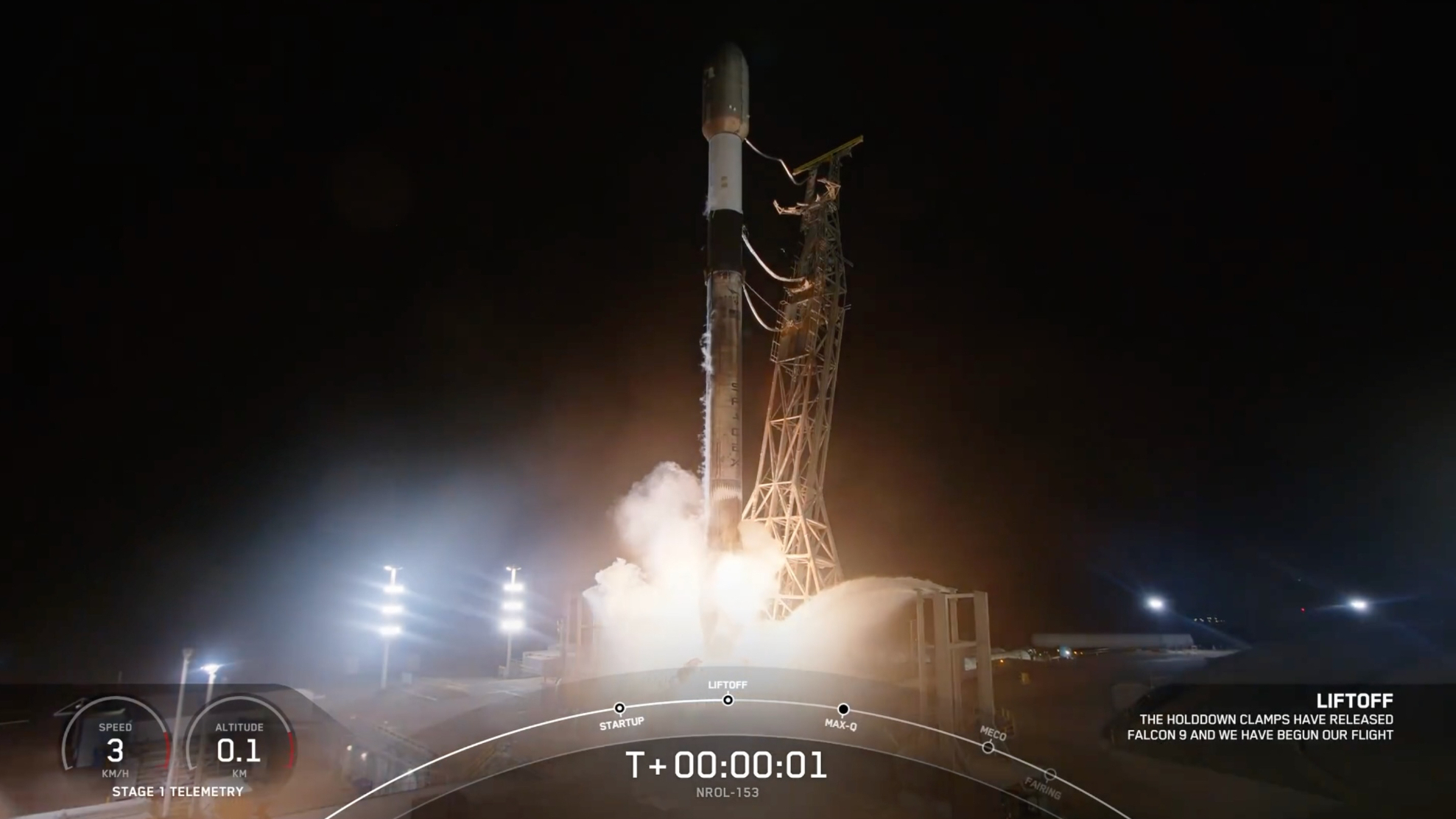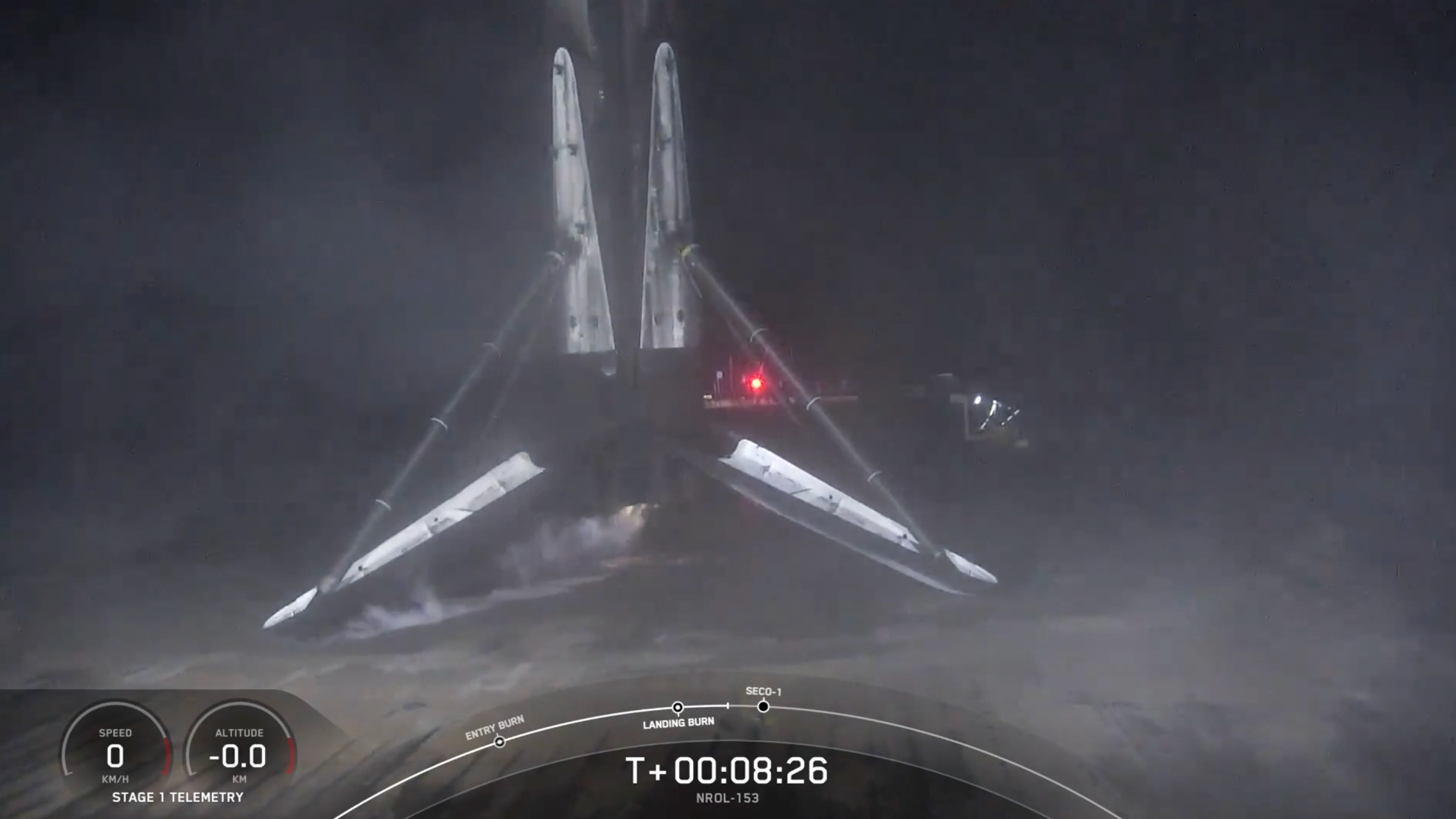SpaceX launched another batch of U.S. spy satellites from California's central coast tonight (Jan. 9).
A Falcon 9 rocket lifted off from Vandenberg Space Force Base tonight at 10:53 p.m. EST (7:53 p.m. local California time; 0353 GMT on Jan. 10) on the NROL-153 mission for the U.S. National Reconnaissance Office (NRO).
NROL-153 was the seventh launch servicing the NRO's "proliferated architecture," which the agency has described as consisting of "numerous, smaller satellites designed for capability and resilience."

We don't know much beyond that, as the NRO tends to be tight-lipped about its orbiting assets. However, the proliferated architecture satellites are thought to be "Starshield" craft — modified versions of SpaceX's Starlink internet satellites featuring some high-tech reconnaissance gear.
Related: SpaceX launches next-gen US spy satellites on 100th Falcon 9 flight of the year (video, photos)
The previous six proliferated architecture missions also flew on Falcon 9 rockets from Vandenberg, between May and December of last year.

The Falcon 9's first stage came down for a landing on the SpaceX drone ship named "Of Course I Still Love You" in the Pacific Ocean about eight minutes after liftoff tonight as planned.
Get the Space.com Newsletter
Breaking space news, the latest updates on rocket launches, skywatching events and more!
It was the 22nd launch and landing for this particular booster, according to a SpaceX mission description.
The rocket's upper stage, meanwhile, continued carrying its clandestine satellites to orbit. We don't know when or where exactly they will be deployed; SpaceX's mission description does not provide that information.
Editor's note: This story was updated at 11:18 p.m. ET on Jan. 9 with news of successful launch and rocket landing.
Join our Space Forums to keep talking space on the latest missions, night sky and more! And if you have a news tip, correction or comment, let us know at: community@space.com.

Michael Wall is a Senior Space Writer with Space.com and joined the team in 2010. He primarily covers exoplanets, spaceflight and military space, but has been known to dabble in the space art beat. His book about the search for alien life, "Out There," was published on Nov. 13, 2018. Before becoming a science writer, Michael worked as a herpetologist and wildlife biologist. He has a Ph.D. in evolutionary biology from the University of Sydney, Australia, a bachelor's degree from the University of Arizona, and a graduate certificate in science writing from the University of California, Santa Cruz. To find out what his latest project is, you can follow Michael on Twitter.
